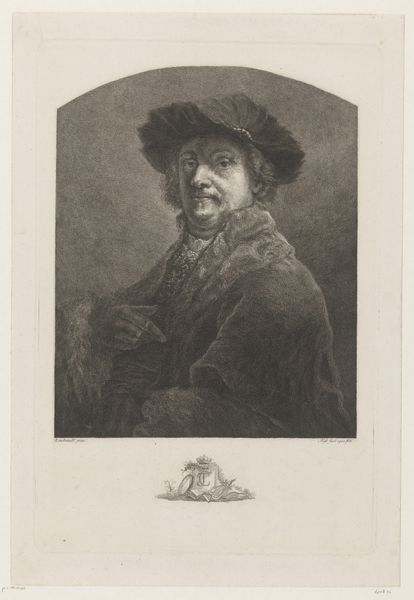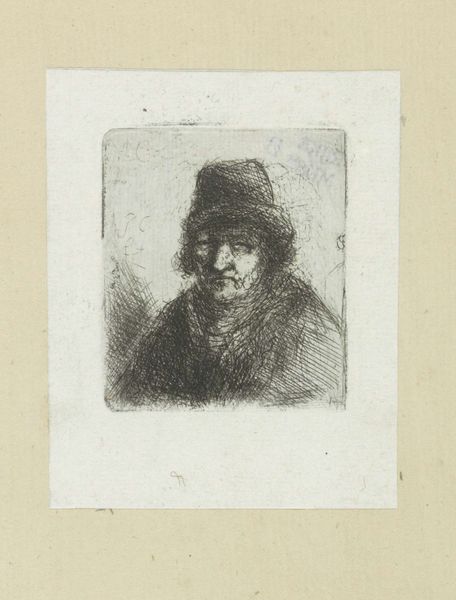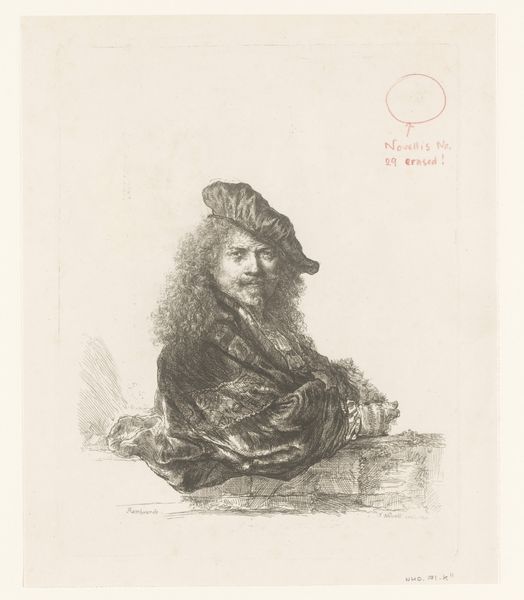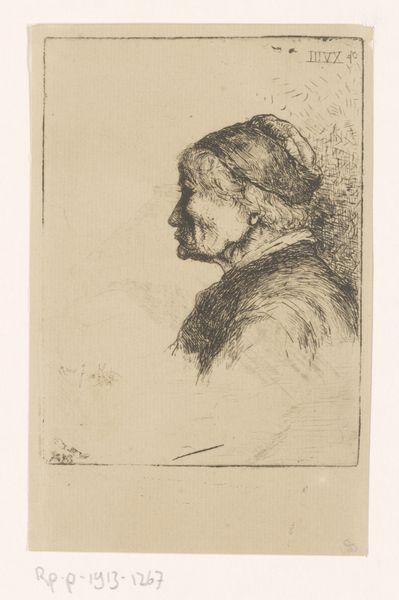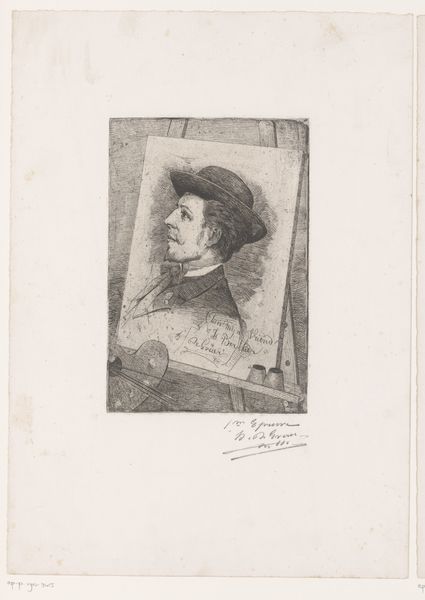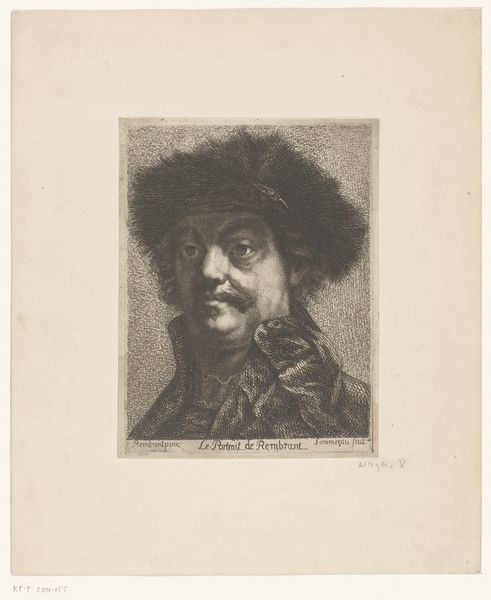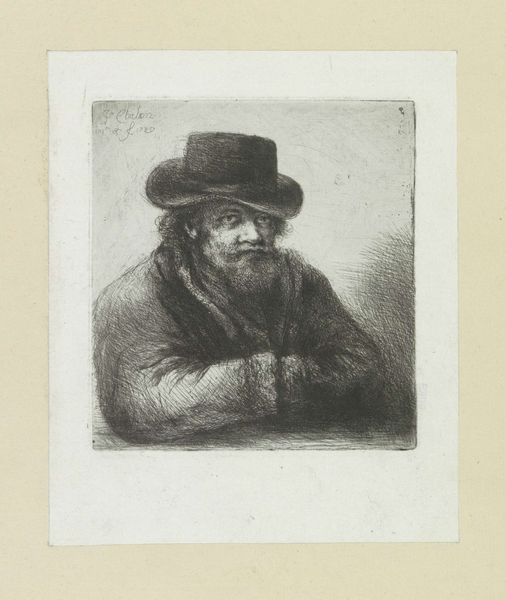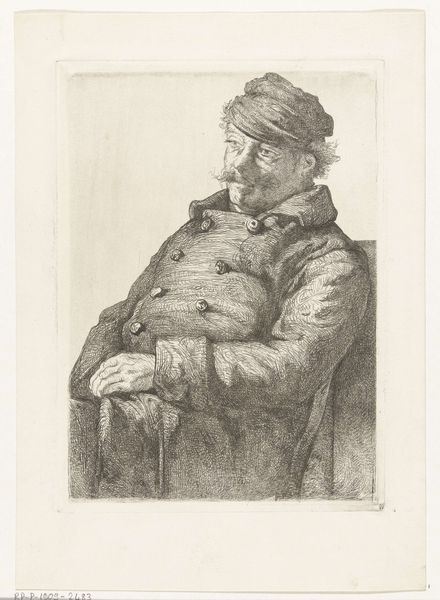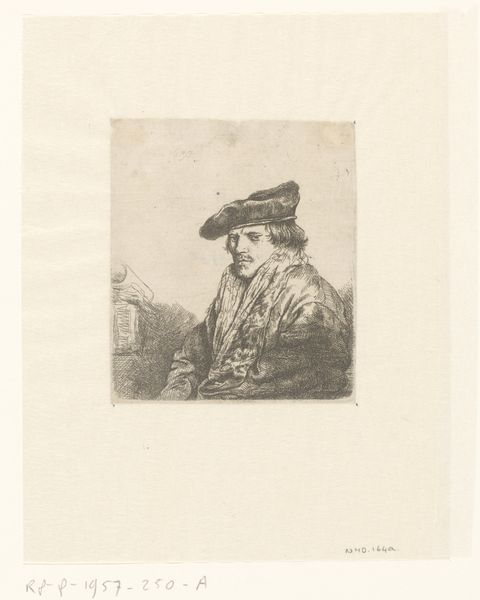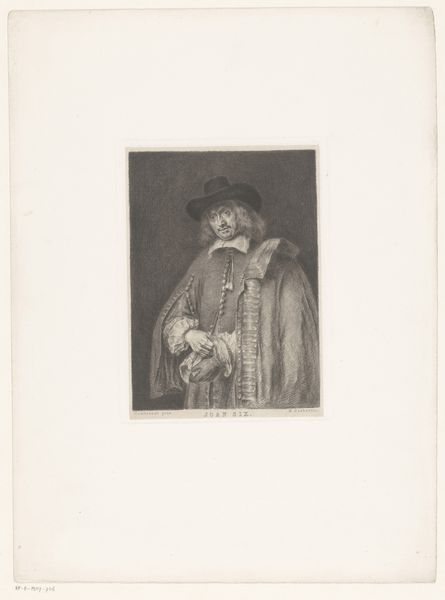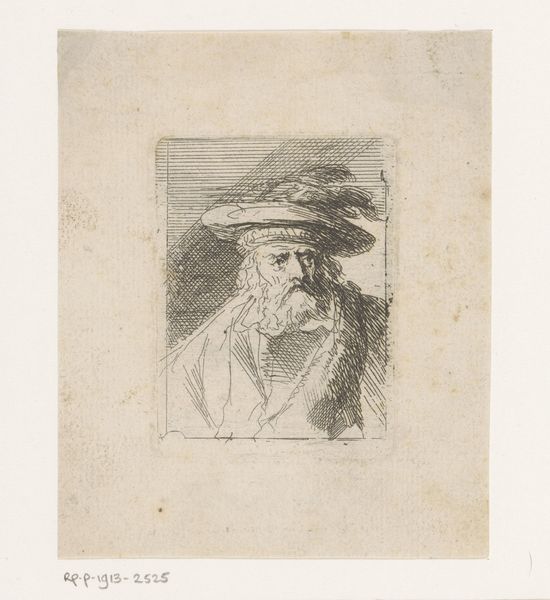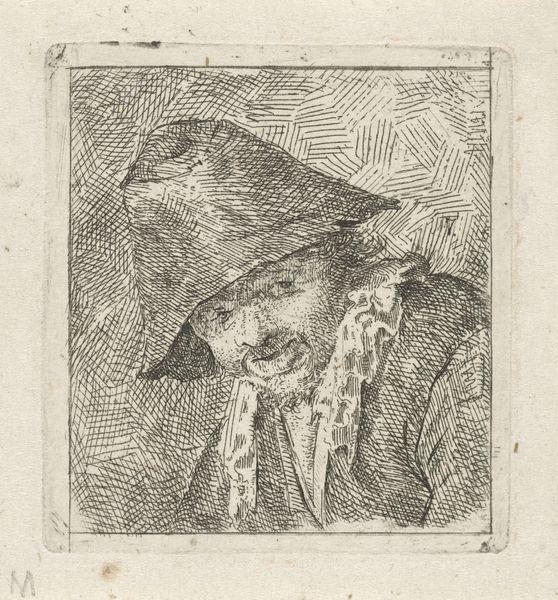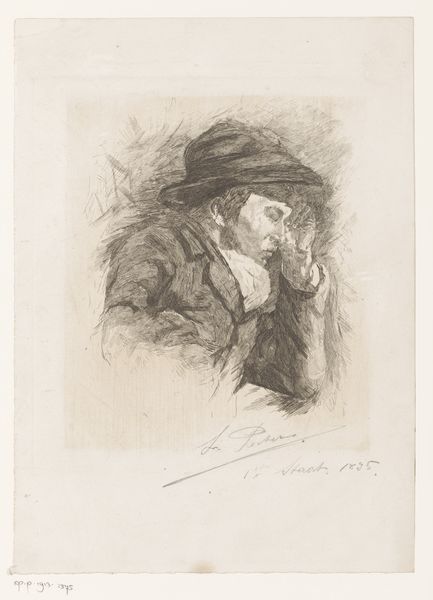
etching
#
portrait
#
self-portrait
#
baroque
#
etching
#
figuration
#
monochrome
Dimensions: height 173 mm, width 137 mm
Copyright: Rijks Museum: Open Domain
Editor: This is *Self-portrait leaning on a stone sill*, etched by an anonymous artist around 1639, and currently held at the Rijksmuseum. There's an intimate feel to it, almost casual, yet the clothing is so detailed. How do you read the symbolic nature of self-portraits like this? Curator: That's a great starting point! It is like looking into the artist's soul, isn't it? Consider the “stone sill” – a liminal space. He's leaning, relaxed but observant. Think of Baroque art as theatre; what role is the artist playing? And the eyes--are they challenging us or inviting us in? Editor: I see what you mean about a theatre. I guess I'm not sure if there's a "role" besides that of an artist looking at himself. Curator: Exactly, but it's a constructed image, carefully composed. His attire, that fantastic beret and robe—do these signify artistic identity or status? Remember, clothing in portraits can be very performative. Think also about light and shadow –notice how much they emphasize a dramatic unveiling. Editor: I never thought about that much intention behind what he was wearing; I'm thinking more now about how deliberate these choices are. The shadow feels particularly effective in this composition. Curator: Absolutely. And it all boils down to legacy. Self-portraits allow an artist to control how they will be seen, and remembered. In the 17th century, this would be particularly resonant. How do you think this etching speaks to ideas about the artist as an individual? Editor: This makes me rethink self-portraits; it's like the artist is crafting their persona for posterity, selecting particular visual and symbolic languages. Thank you, I learned so much about self-portraits! Curator: Likewise; viewing portraits with symbolism is key, I believe, to accessing richer contexts.
Comments
No comments
Be the first to comment and join the conversation on the ultimate creative platform.
